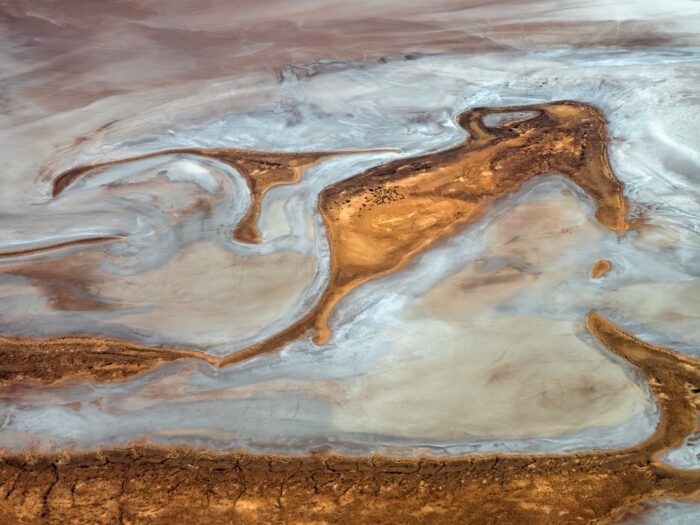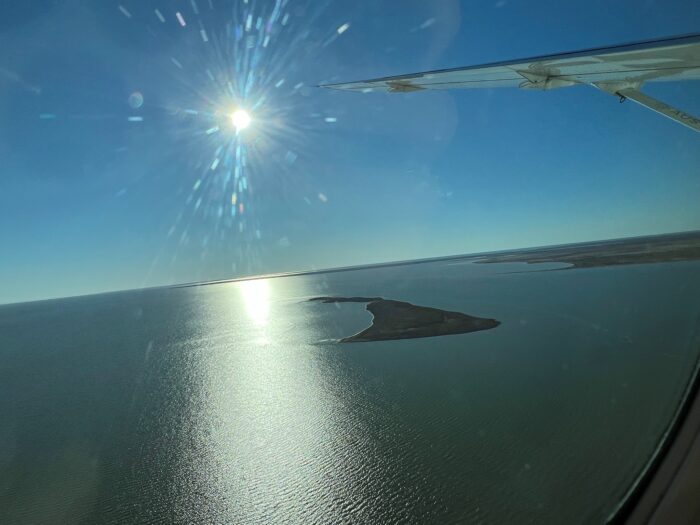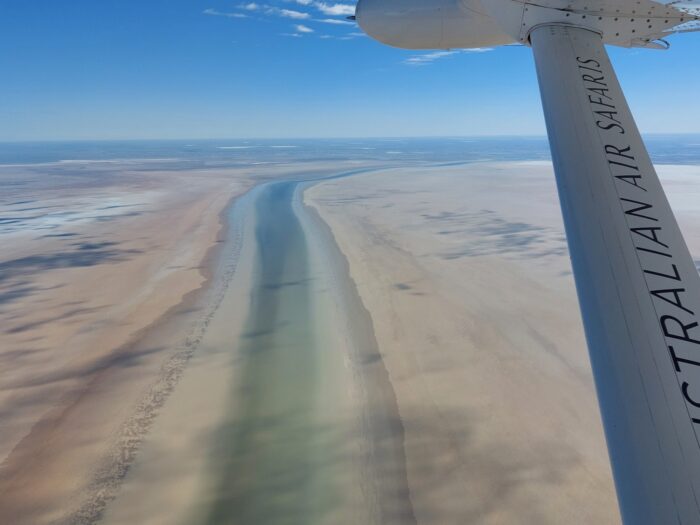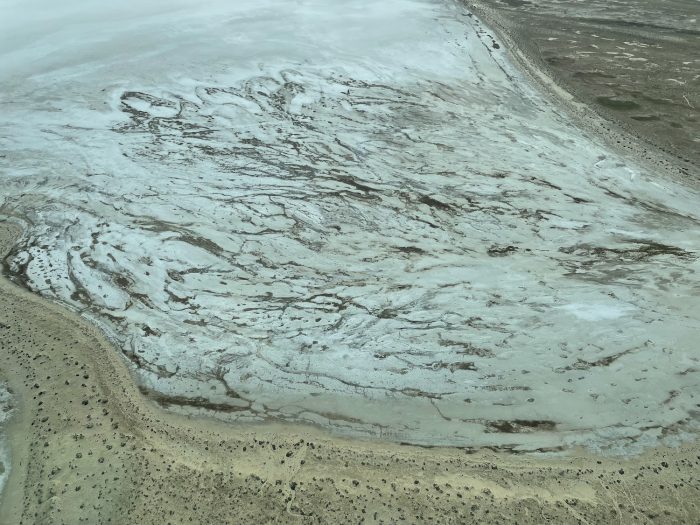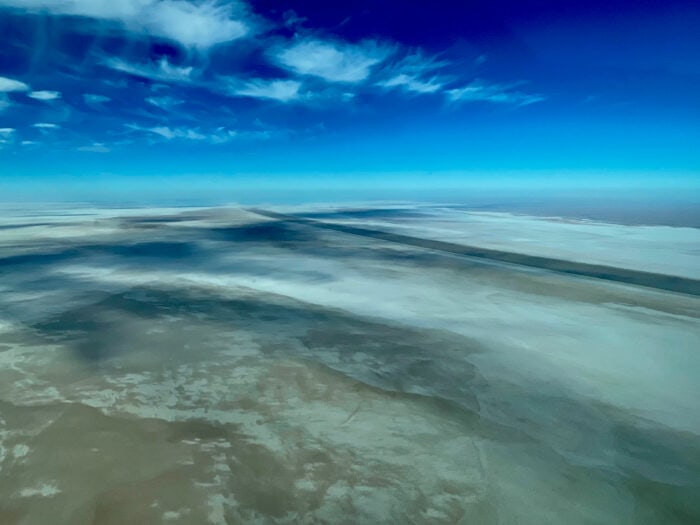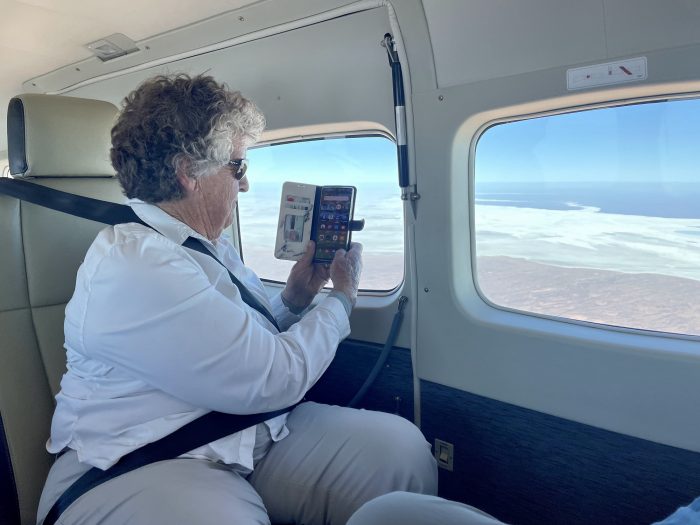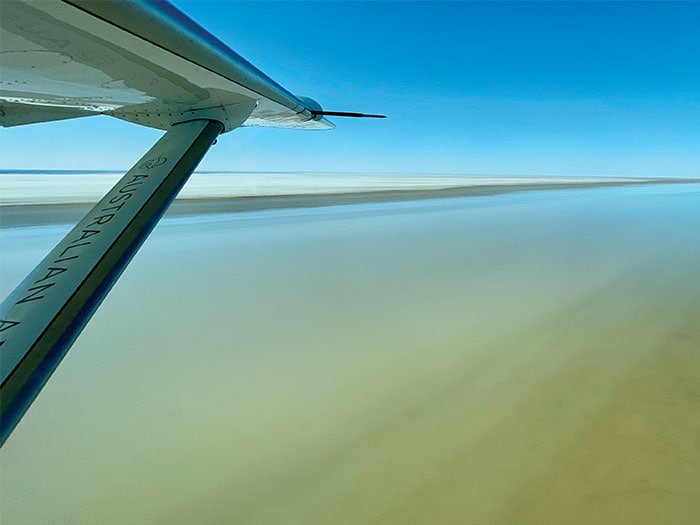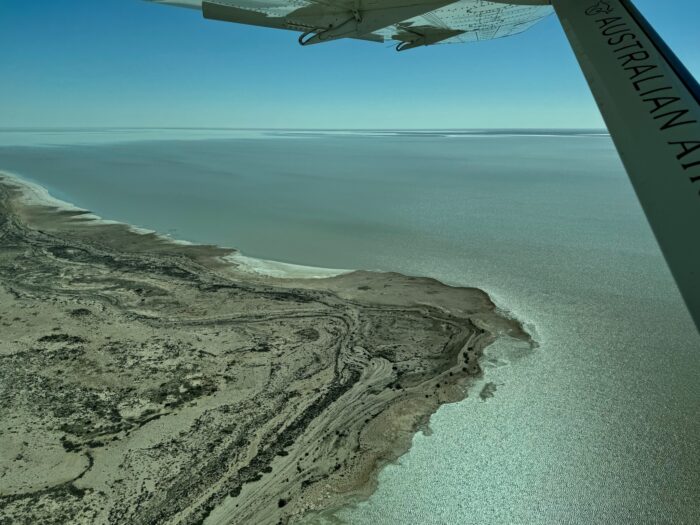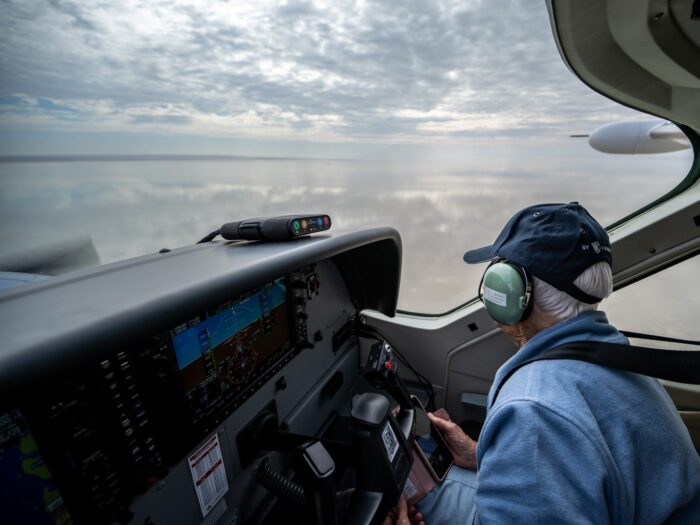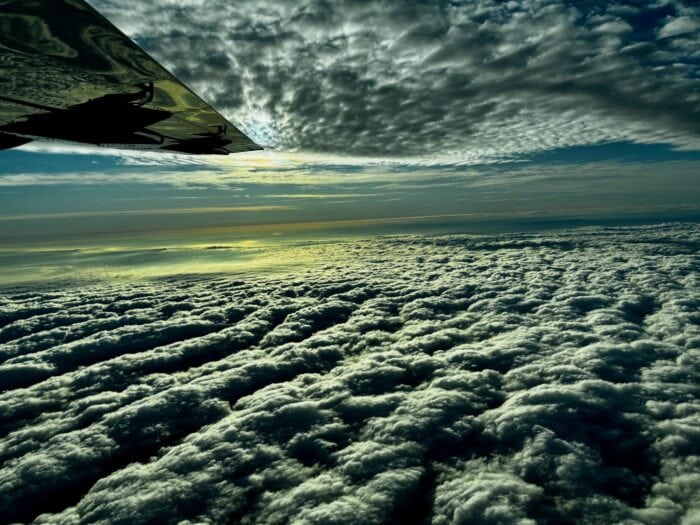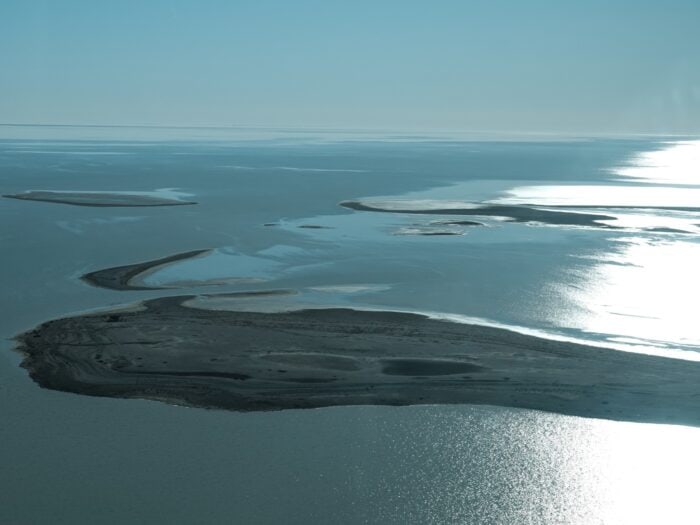Kati Thanda-Lake Eyre in all Seasons
When word spread that Kati Thanda-Lake Eyre was flooding in 2025, the phones at Australian Air Safaris rang hot. Enquiries poured in, extra flights were scheduled, and travellers rushed to see Australia’s largest salt lake transform into a vast inland sea.
But those who’ve seen the lake across the seasons will tell you that whether it’s full of water, half-filled, or shimmering dry, this outback icon is always worth seeing. Its sheer scale, beauty, and shifting moods make it a genuine showstopper all year-round.
Always Changing, Always Spectacular
At 144 kilometres long and 77 kilometres wide, Kati Thanda-Lake Eyre defies imagination. It’s an immense catchment that drains almost one-sixth of Australia - and the lowest point on the continent, yet the water doesn’t always reach the whole way. Some years it floods dramatically, while in others it stays dry, glistening under crisp blue skies. Every day is unique, and a genuine spectacle from the air!
As our veteran pilot, Keith Siler puts it: “Anytime is a good time to see Lake Eyre, just that some things are different if there’s water (lots, medium, a little) or none!”
The Spectacle of a Flood
When floodwaters sweep in from the Channel Country, the transformation is astonishing. The Cooper and Diamantina rivers spread their gnarled old fingers into the lake, filling cracks and rivulets until the salt pans shimmer, reflecting clouds above. Around midday, the surface can almost flatten into a giant mirror, where horizon and sky just seem to, well… vanish.
“I think that the lake is probably at its best with about 70% coverage of water and the reflections on the water, particularly if the winds are calm, are outstanding!” says Keith.
Floods also bring life. Fish arrive with the flows, as do millions of birds, some from as far afield as Russia, China and Antarctica. Australian pelicans, banded stilts, red-necked avocets, gull-billed terns and black swans descend on this outback oasis in some seriously staggering numbers. Breeding colonies spring up around waterholes, and vegetation bursts into life across the floodplains. For twitchers, it’s a genuine spectacle!
Dreamy When Dry
The dry season is never dull. In many ways, the lake is at its most surreal when water has evaporated, leaving a vast expanse of sparkling salt. From above, the thick white crust stretches to the horizon, etched with intricate patterns and swirls.
In the soft light of morning or evening, the surface can even take on a bluish glow, a little like the sea. These dramatic colour shifts, visible only from the air, are a genuine highlight for our guests, with the sheer size of the lake often leaving them the most awestruck of all. Keith has heard countless guests relay their emotions in the air: “I just didn’t realise that it was so big… I’ve honestly never seen anything else that compares with this…” The list goes on and on.
Flying low and slow also reveals the little details that seeing things at ground level simply can’t imitate: the cracked textures, the contrast between red desert earth and bright white salt (salt and pepper, if you will), and a sense of scale that makes this place feel larger than life itself.
Wild and Wonderful
In a nutshell, what you’ll see at Kati Thanda-Lake Eyre is an ever-changing feast for the senses, and something that is left to Mother Nature to deliver when and how she chooses.
- Summer can bring extreme heat (and turbulence), but in autumn, winter, and spring, the story shifts and changes.
- Weeks and months after northern rains, emerald-green vegetation carpets the surrounding country. As Keith reflects, “I love the emerald green colour of the country right after rain.”
- In wetter times, birdlife is also abundant not just on the lake but along its tributaries - particularly the Diamantina and Warburton inflows, plus Goyder Lagoon.
- In drier years, wildlife congregates at permanent waterholes, offering equally rewarding sightings for those who know where to look – and that’s us.
From the air, you might even spot the odd camel (even a pack of them) wandering the shoreline, their tracks etched into the salt. Rare, but not unknown to happen…
Why See Kati Thanda-Lake Eyre with Australian Air Safaris?
With more than 45 years of experience and a team of pilots who have collectively flown over the lake thousands of times, Australian Air Safaris are genuine experts in getting our guests up close and personal with one of the world’s most unique, gigantic and isolated places. Keith has been flying tours here since the late 1970s, and as he’ll tell you, “The catchment represents approximately 16 percent of Australia’s total land mass… the size of it can really only be soaked up from the air.”
Our small-group tours ensure that everyone gets a window seat (yes, everyone!), and our itineraries include not just spectacular flightseeing but also the chance to soak in the quirky coolness of some of Australia’s most remote outback towns. Guests consistently tell us it’s the combination of sky-high views and on-the-ground hospitality that honestly makes their trip so memorable.
As one recent guest (Macca, via TripAdvisor) put it:
“The views flying over Kati Thanda-Lake Eyre and the outback were amazing, the ground tours to areas of Australia we would never have seen were excellent, and the pilots were first class.”
See it from the Air
Whether glittering in the dry heat or brimming with winter and spring waters, Kati Thanda-Lake Eyre is one of Earth’s greatest stages. It’s here that moods shift with the seasons, that every day tells a different story, and the impact never fades.
So, if you’ve ever thought “I missed out” when the floods passed, think again... This is a destination worth seeing at any time of the year - from any angle or mindset.
And if you’re on board with Australian Air Safaris, you’ll not only see exactly that, but also experience things with a pilot’s insight - the people who know every channel, every colour shift, and every hidden story of the outback’s greatest secret.
Check our upcoming air tours to Kati Thanda-Lake Eyre and make a plan to see this spectacular natural landscape.



